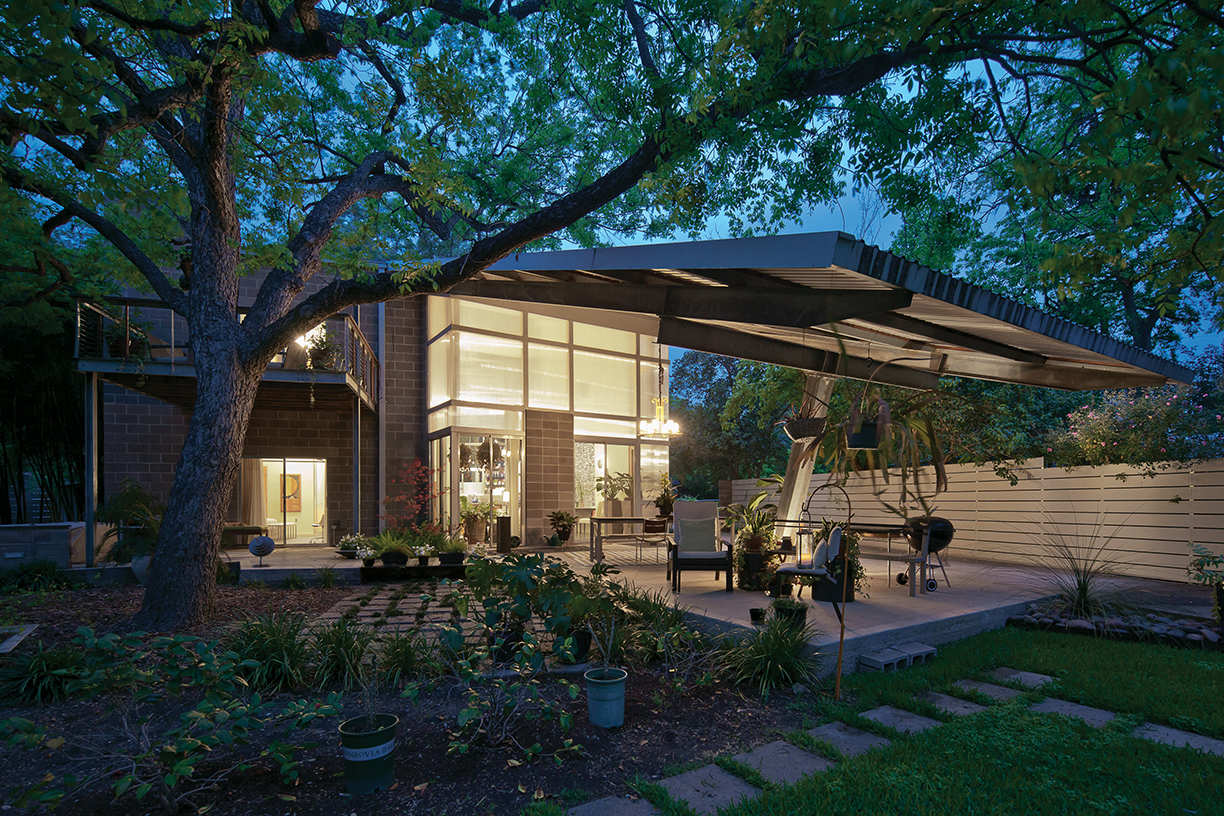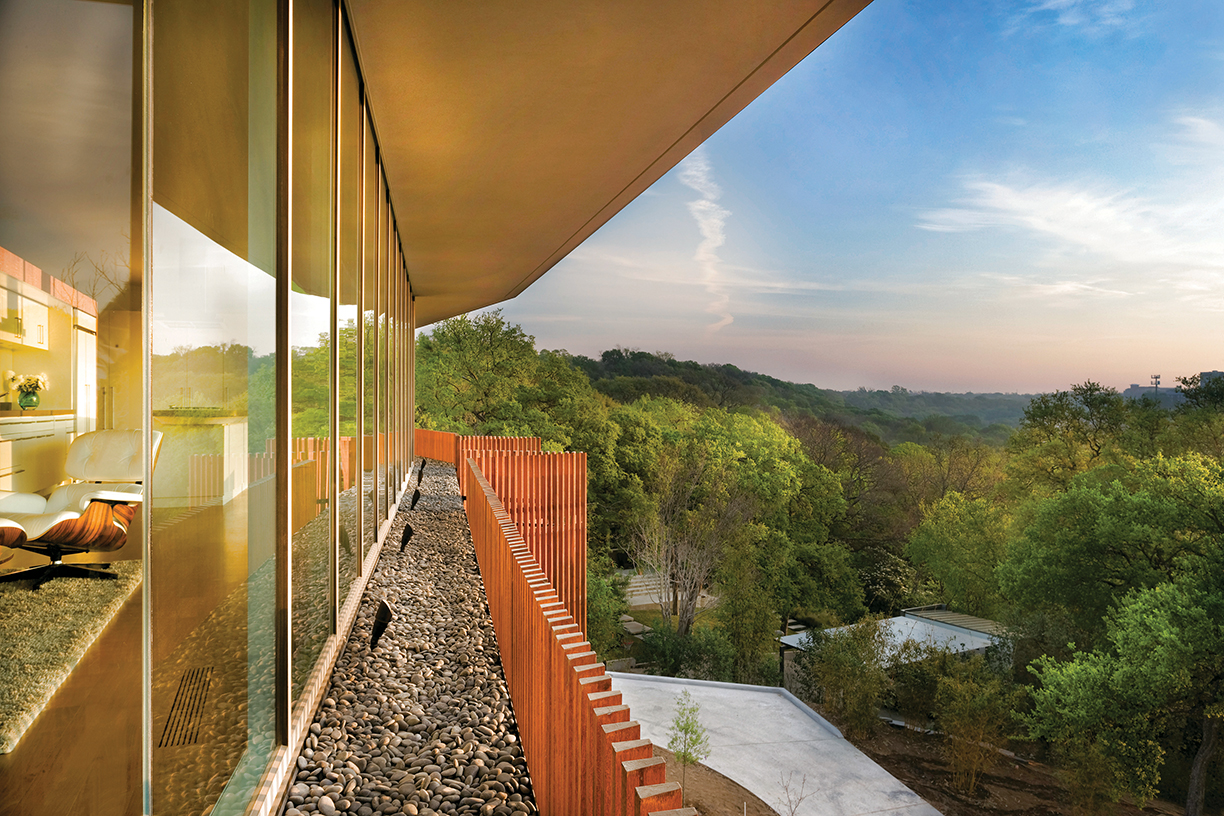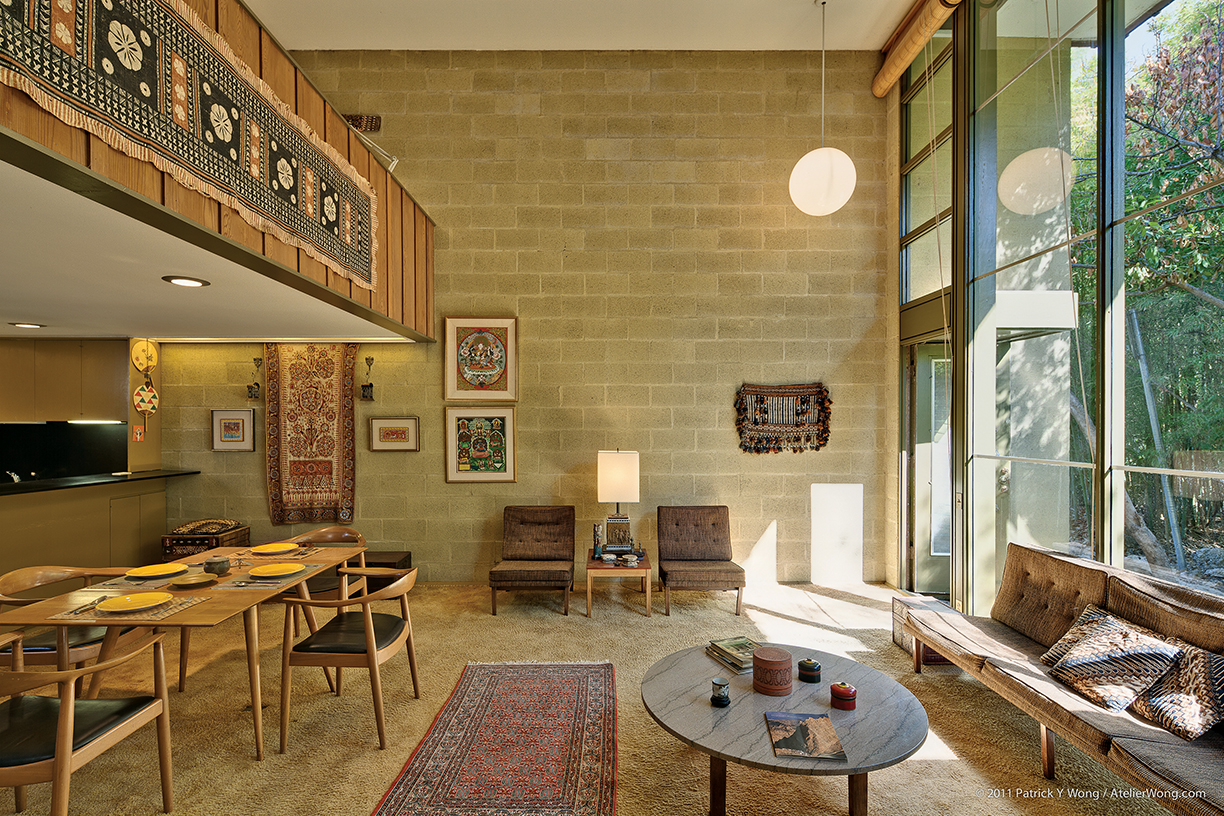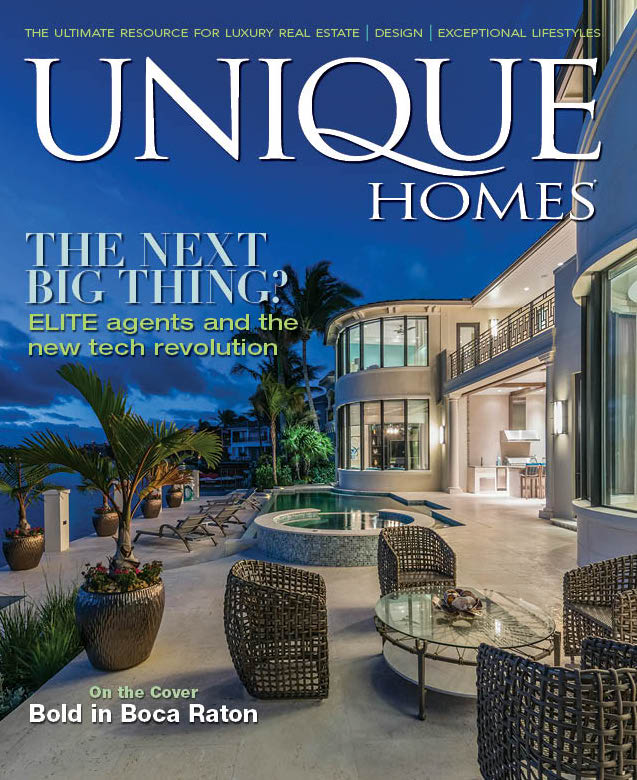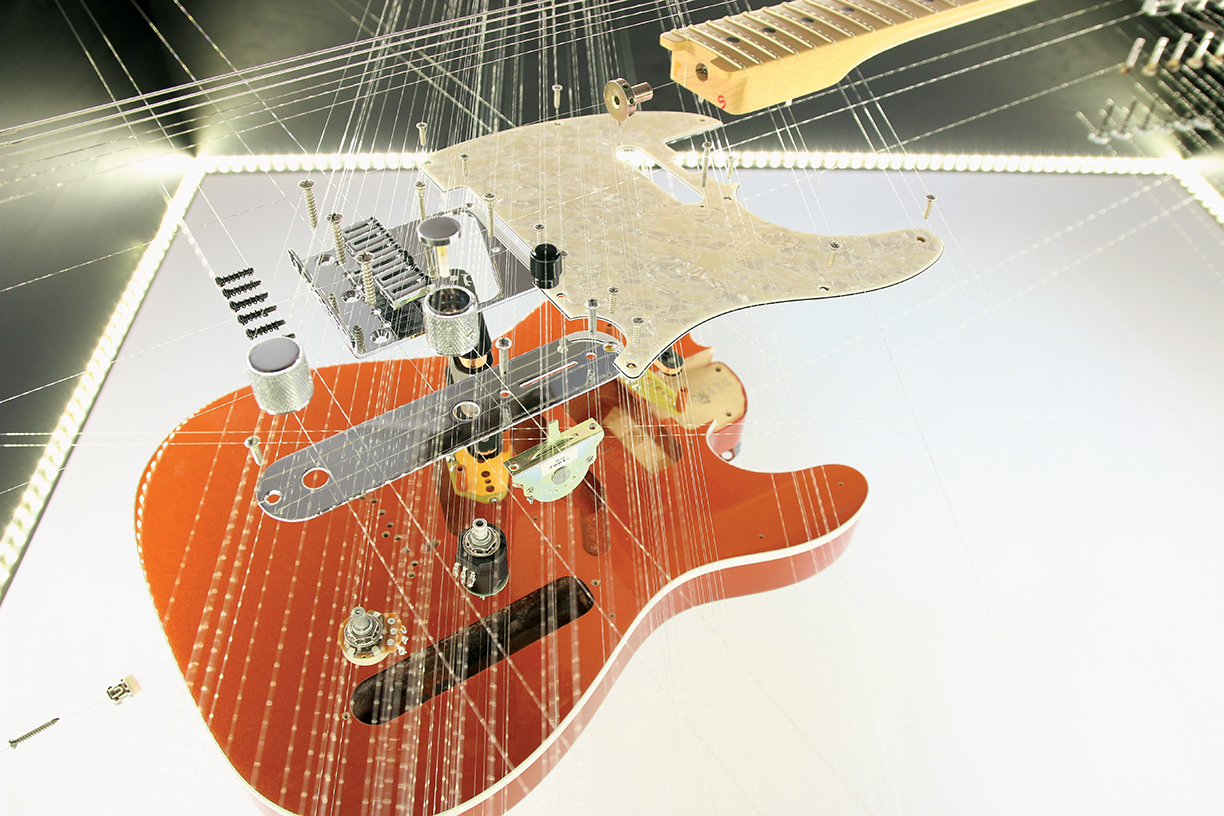

Photos by John A. Peralta
John A. Peralta began taking things apart long before he was compelled to truly pursue art. “I was always breaking things open to see what was inside. I’ve had such wonder for the tiny components that make something work,” he says.
Now a self-taught artist based in Austin, Texas, Peralta has a unique taste for both science and how things work as well as art. While working as a business consultant, he began painting as a way to tap into and satiate his creative side. The exploded diagram, which has been an essential engineering tool, melds Peralta’s contrasting interests and inspired his work.
An exploded diagram of a bike on the back of a magazine was Peralta’s original inspiration, but since then, his work has begun to evolve over the years. “It’s more about a concept that imagines that these machines we use — that we often take for granted and use every day — they hold our memories,” according to the artist. “And sometimes in literal ways. The typewriter has an imprint of every letter, every document permanently imprinted on it. It could never be deciphered today, but nevertheless it’s in there.”
Peralta’s art reveals the inner workings of a time in history or a memory. The contrast between machinery and emotion creates enchanting displays and elicits a feeling when you see them. The idea of machinery holding memories extends to all of our objects, according to Peralta. “It’s why we become nostalgic years after for antiques or whatever it might be. We attach emotion to these things and they hold our memories and it’s sort of two-way relationships with the objects in our life.”
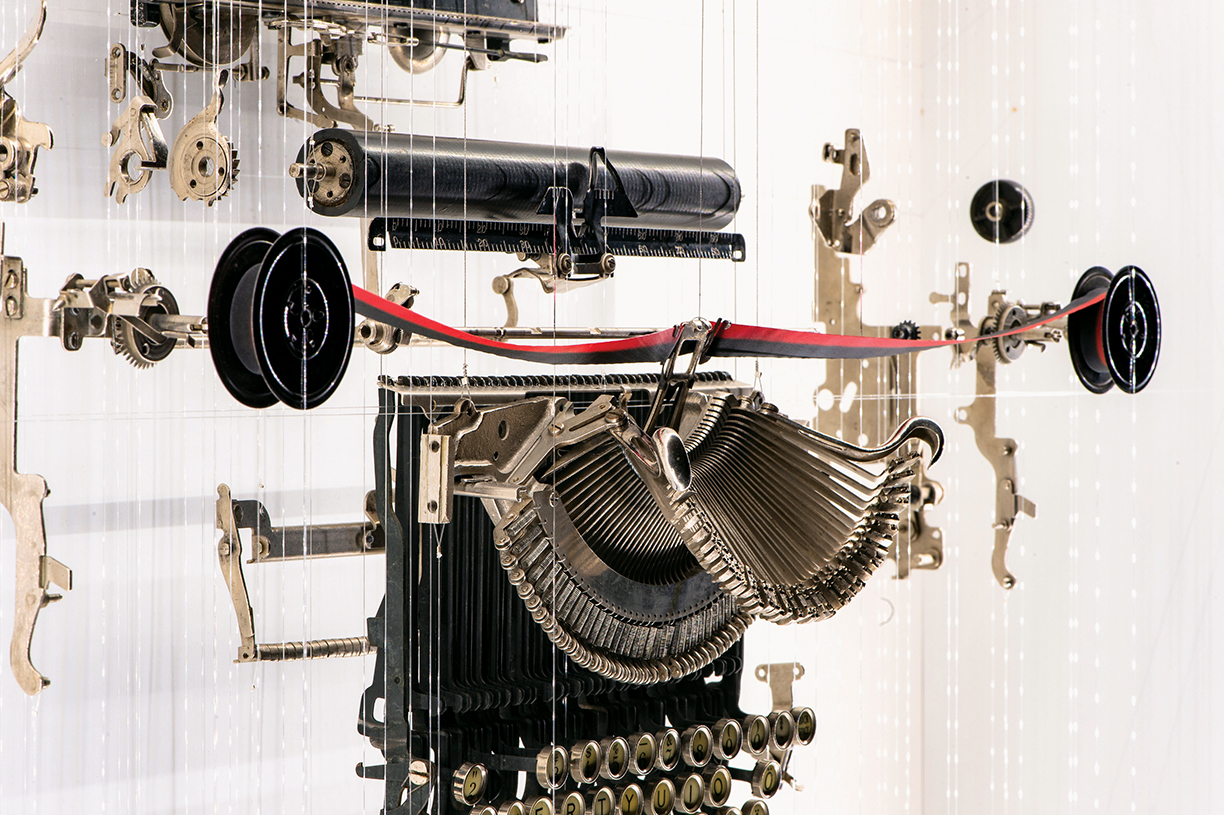
Peralta describes a large pile of items in his studio that he might one day choose to take apart, but there is a method to deciding which items he will display. “I usually choose something that would be considered iconic. Something highly recognizable, and familiar, but most of the time, it’s also something that is no longer in use,” he says. Often, he chooses items that people may have seen in their grandparents house or in an antique store. “Those items have a lot of emotion and nostalgia connected to them. I’m also looking for things that the designers and architects put a lot of time and careful thought into.”
“For some reason, it has a strong appeal. I’m not entirely sure why,” Peralta says about the exploded diagram concept, explaining that most people see them in their everyday lives without realizing, but their eyes still light up when they see it displayed like this. “Because it’s not like you can’t see the string. At first, I tried to hide it. I tried all different things to try and hide the suspension. But I began to realize that I actually shouldn’t hide it. The string really contributes to the piece.”
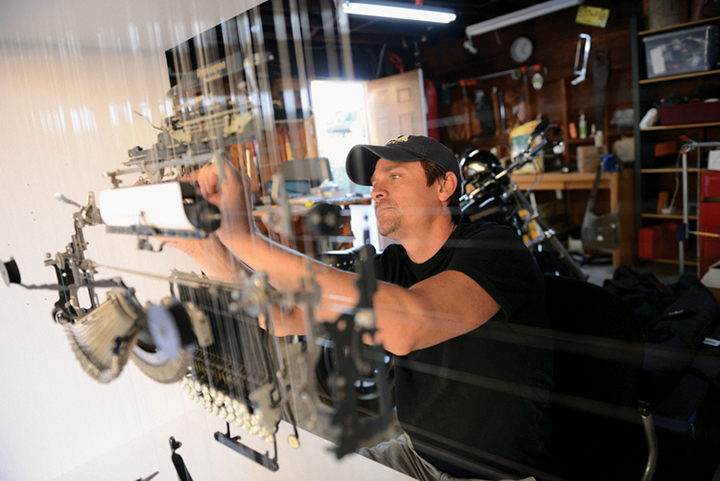
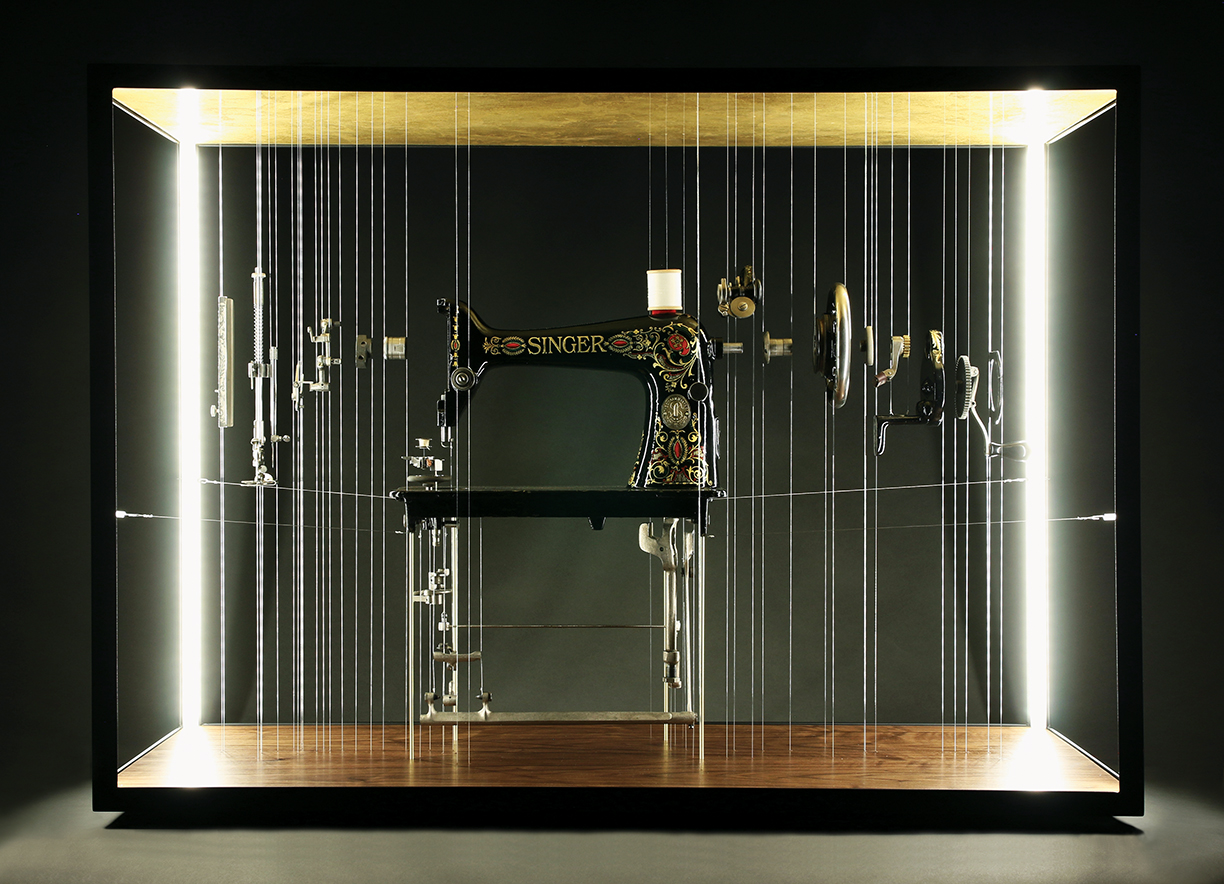
In the Future
Working mainly on commissioned pieces these days, Peralta is still working on a few ideas that continue to push the boundaries of the exploded diagram concept. When asked what his dream projects are, he says, “There’s actually two. I’ve been wanting to do — and I haven’t really gotten anyone to pull the trigger yet — and that’s a grand piano. I think it would be very impressive. I imagine it in a large hotel with a high ceiling or something like that. And the other one is a fighter jet, which would obviously be a very big piece. It would need a superstructure to support it. But I have some really cool ideas of how it would look.”
Capsa Ventures, the developer of the FOURTH& Condos in Austin, Texas, announced they would provide free electricity to PG&E customers if they buy a condo in their 102-unit building near downtown Austin. The announcement came immediately after PG&E declared bankruptcy in January.
“With the mounting uncertainty PG&E customers must have, we want them to know we’ll take care of them if they decide to relocate,” says Scott Sproat, Director of Marketing & Project Sales for Capsa Ventures.
The Austin condo development promotes responsible energy consumption and received a 5 (out of 5) star rating through the Austin Energy Green Building program, the nation’s most successful sustainable building program.
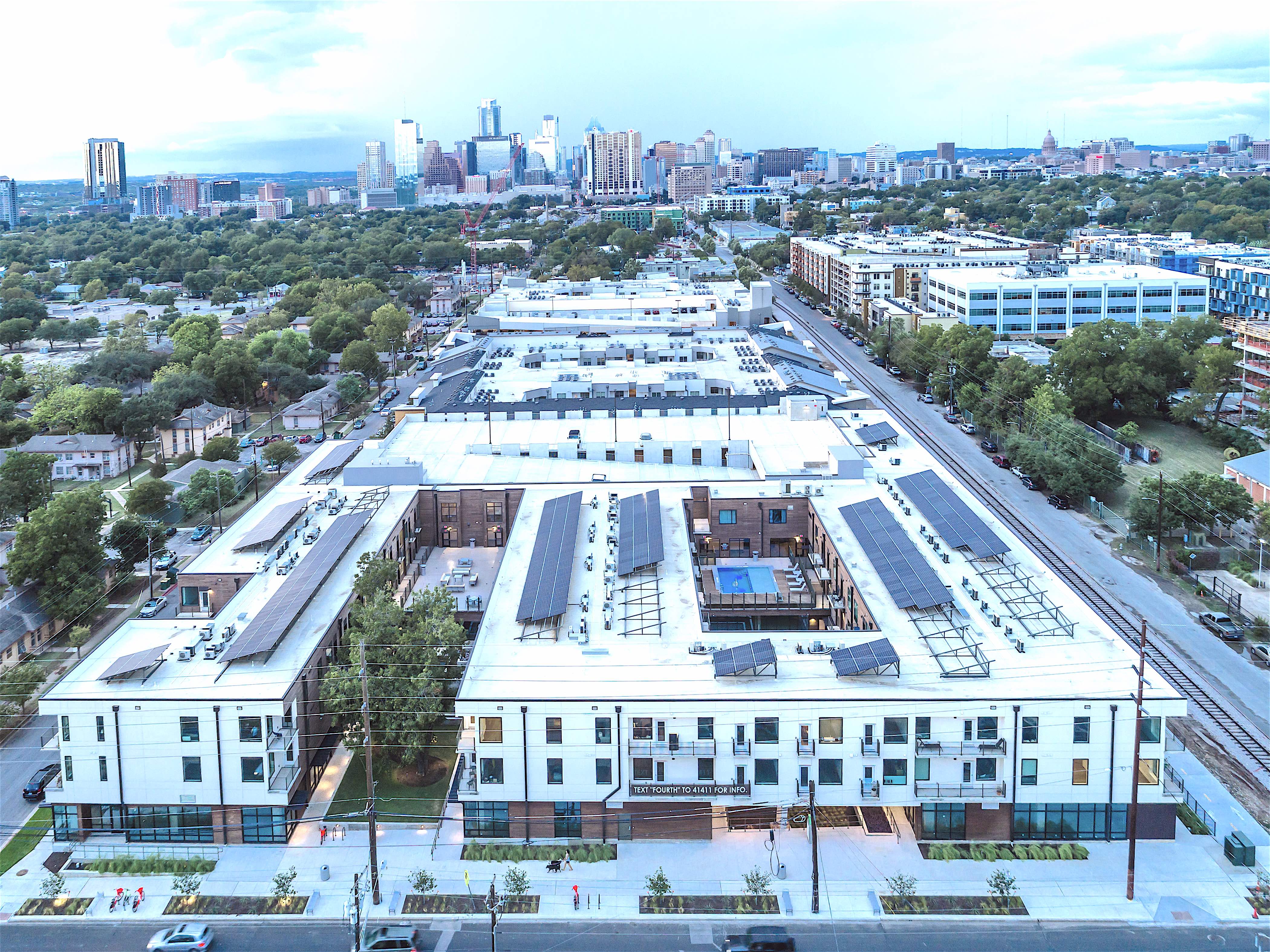
Photo by Bruce James.
“We have a responsibility to be good stewards of the land we develop,” says Rance Clouse, CEO of Capsa Ventures. “Through extensive pre-planning, our team was very intentional with the materials we included at FOURTH&.” The New York Times even included FOURTH& in an article titled “The Many Faces of Innovation In U.S Cities.” With 600 solar panels on the roof, 100 percent LED lighting throughout and an extraordinary building envelope, anyone living here will see significantly reduced energy and water use. The condo project offers “Texas-sized” micro-loft (efficiency) units that are just over 500 square feet to two-bedroom, two and a half bath Urban Walk-Up units that are over 1,400 square feet. Pricing starts in the $250s for micro-loft units. The offer includes a $500 voucher for airfare and all electricity bills for their new condo to be paid for 12 months when new residents purchase and move into any available unit.
The Lone Star State’s forward-thinking, artsy capital has its own distinct personality, one that fuels imaginative residential architecture.
By Roger Grody
Photo courtesy of Patrick Wong/Atelierwong.com
Austin is unlike any other city in Texas, and its residents proudly embrace an eccentric, defiant attitude. A vibrant music scene, progressive politics, trendsetting cuisine, and a technology-driven economy make this metro area of two million one of America’s most dynamic. It comes as no surprise, therefore, that Austin has developed its own exciting architectural traditions.
Kevin Alter, founding partner of Alterstudio Architecture and the Sid W. Richardson Centennial Professor at the School of Architecture at the University of Texas (UT) in Austin, suggests the city is developing a strong tradition of modernism. He reports that 20 years ago there was little interest in the movement, but modern architecture’s ability to connect to the outdoors — it suits the region’s scenic Hill Country nearly year round — has endeared it to Austinites. He also cites attitudes of new residents from other regions of the country (Alter himself is a transplanted New Yorker), the draw of UT and a growing technology industry presence as fueling modern design.
“There are a lot of very good architects in the city, given its relatively small size,” says Alter, asserting there is more interesting residential architecture in Austin than in the giant metropolises of Houston and Dallas. “There’s also a youthful optimism in Austin, so people aren’t looking back in history for inspiration.” Contrasting Austin to more traditional, less architecturally tolerant cities, Alter suggests, “Because of that optimism, there’s not a ‘looking-over-your-shoulder’ mentality here for property owners interested in building modern residences.”
Photo courtesy of Paul Finkel
Real estate broker Brian Linder is a licensed architect and founder of The Value of Architecture, a multi-city network of real estate professionals specializing in architecturally significant homes.
After establishing that niche in Los Angeles, Linder expanded his practice to Austin, appreciating both its family-friendly lifestyle and wealth of exceptional architecture. “Buyers here are willing to pay a significant premium for homes designed by signature architects,” says Linder.
The specialty broker reports one the most desirable neighborhoods in Austin is the trendy South Congress (SoCo) district, where the original housing stock is being replaced with exciting modern architecture. “The area is popular with urban expats from cities like New York, San Francisco and L.A., and buyers are taking their accrued appreciation from those places and investing in good design,” says Linder.
Representative of the top architectural firms in town are Bercy Chen Studio, Jay Hargrave Architecture, Chioco Design, and Minguell-McQuary Architecture.
Austin architects, according to Linder, soften the sometimes austere modernism found in L.A., noting their work emphasizes texture through incorporation of native materials. “Elements like site-gathered stone and reclaimed lumber or brick add a more human scale defined by those materials,” he says. While modernism is becoming the city’s preferred style, there is also ample demand for contemporary farmhouses, a theme promoted by local developers.
One of the priciest current listings in Austin is a striking modern home encompassing 5,400 square feet of living space, offered at $8.5 million. The design, from prominent local firm Dick Clark + Associates, features panoramic views of the city skyline through 60 feet of retractable floor-to-ceiling glass in a living area that opens onto an infinity-edge pool.
Offering a distinctly different lifestyle is a 558-square-foot penthouse-level condominium at the Seaholm Residences in downtown Austin, listed at $399,000. Built on the site of a former power plant, this project helped energize demand for high-rise living in Austin and The Independent, designed locally by Rhode: Partners, will be the tallest residential tower west of the Mississippi when completed. Professor Alter reports that as recently as 2005, investment in downtown condominiums was anemic, but young professionals now arriving in town relish the city center.
“We want to make sure we create spaces that fit our clients, beyond aesthetic or stylistic preferences, beyond basic function,” says Sean Guess, founding principal of the Austin firm Faye and Walker. While he does not view his work as reflecting a particular signature, Guess is among those talented young architects contributing to Austin’s evolution as a city increasingly identified with modern design.
“I tend to focus on the essence of a form, stripping away extraneous information, and carve out spaces from those fundamental forms,” says Guess. Raised in nearby Temple, Texas, Guess suggests that despite Austin’s reputation as the Lone Star State’s least-Texas place, the city’s spirit of risk-taking and independence — certainly reflected in its architecture — is very much the product of the Texas ethos.
“This is a very eclectic community that attracts a great variety of people and backgrounds, which results in creativity and diversity in its architecture,” says Guess of Austin. Among the architect’s acclaimed projects is the home he designed for his own family, dubbed the “Elephant House” because its wrinkled grey corrugated fiber-cement facade is evocative of elephant hide. Some interior walls are clad in clear-coated plywood, making Guess’ novel use of everyday materials reminiscent of Frank Gehry’s early work.
Photo courtesy of Patrick Wong/Atelierwong.com
“I appreciate modern architecture that reflects tasteful, principled design,” says Linder, who is less inspired by facsimiles of Tuscan villas. He is kept increasingly busy in the Texas capital, as Austin’s exceptional architects work overtime to meet demand from buyers with a passion for innovative residential environments.
State capitals are oftentimes thriving cities with a lot of economic and cultural value. In fact, they can be some of the best places to live in America. But not all state capitals are created equal. WalletHub has put together a list of 2018’s Best State Capitals to live in. And though 17 of them are the largest cities in their states, the biggest population doesn’t always represent the best quality of life.
In order to determine which state capitals make the best homes, WalletHub compared all 50 across 51 key indicators of affordability, economic strength, quality of education and health, and overall living standards. Our data set ranges from cost of living to K–12 school-system quality to number of attractions.
Best State Capitals to Live In
- Austin, TX
- Madison, WI
- Boise, ID
- Lincoln, NE
- Bismarck, ND
- Raleigh, NC
- Denver, CO
- Salt Lake City, UT
- Juneau, AK
- Concord, NH
- Columbus, OH
- Helena, MT
- Olympia, WA
- Oklahoma City, OK
- St. Paul, MN
- Cheyenne, WY
- Montpelier, VT
- Pierre, SD
- Des Moines, IA
- Phoenix, AZ
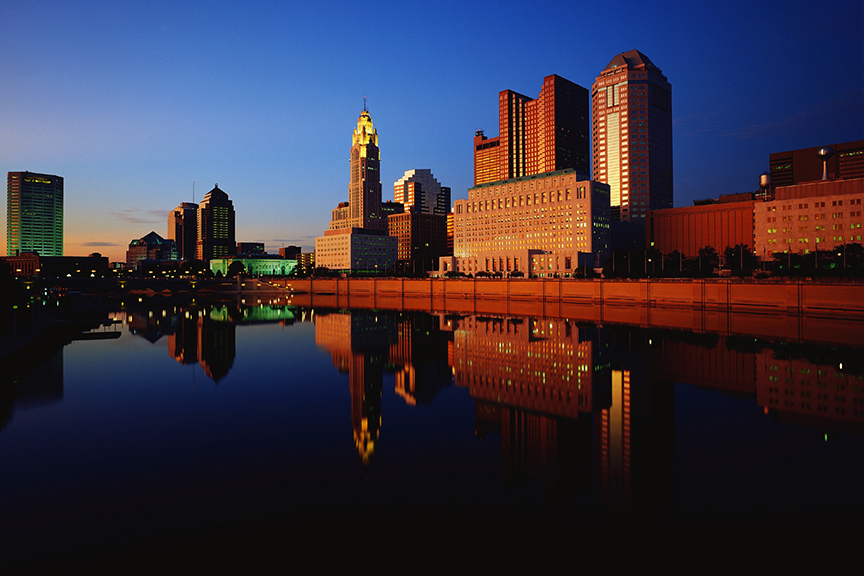
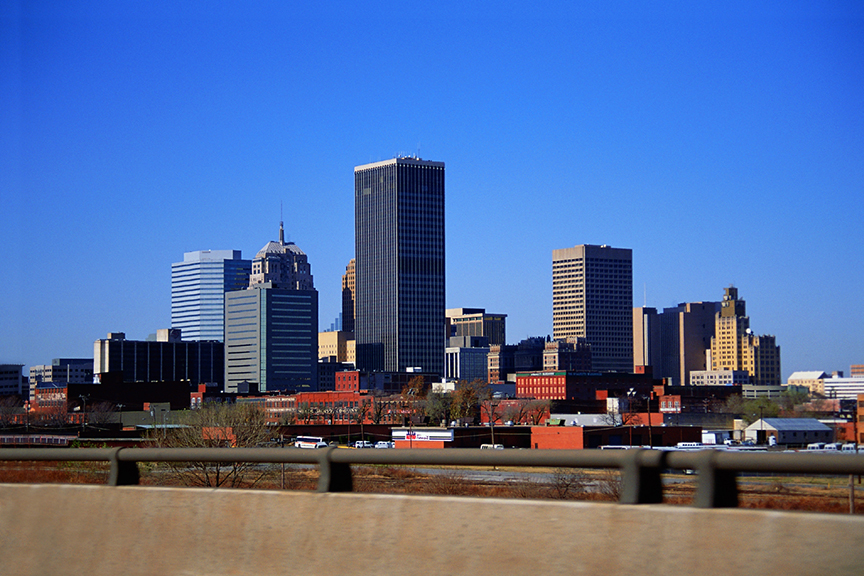
Pictured above: Columbus, OH waterfront; Oklahoma City, OK
Out of these places:
- Juneau, Alaska, has the highest median household income (adjusted for cost of living), $67,310, which is 2.6 times higher than in Hartford, Connecticut, the city with the lowest at $26,264.
- Bismarck, North Dakota, has the lowest unemployment rate, 1.7 percent, which is 4.6 times lower than in Hartford, Connecticut, the city with the highest at 7.8 percent.
- Providence, Rhode Island, has the lowest share of state-, local- and federal-government employees, 8.4 percent, which is 4.6 times lower than in Juneau, Alaska, the city with the highest at 38.4 percent.
- Madison, Wisconsin has the highest share of adults 25 years and older with at least a bachelor’s degree, 56.3 percent, which is 4.7 times higher than in Trenton, New Jersey, the city with the lowest at 11.9 percent.
For the full story, and the entire list of best small cities, visit WalletHub.com.

Phoneix, AZ

Denver, CO


